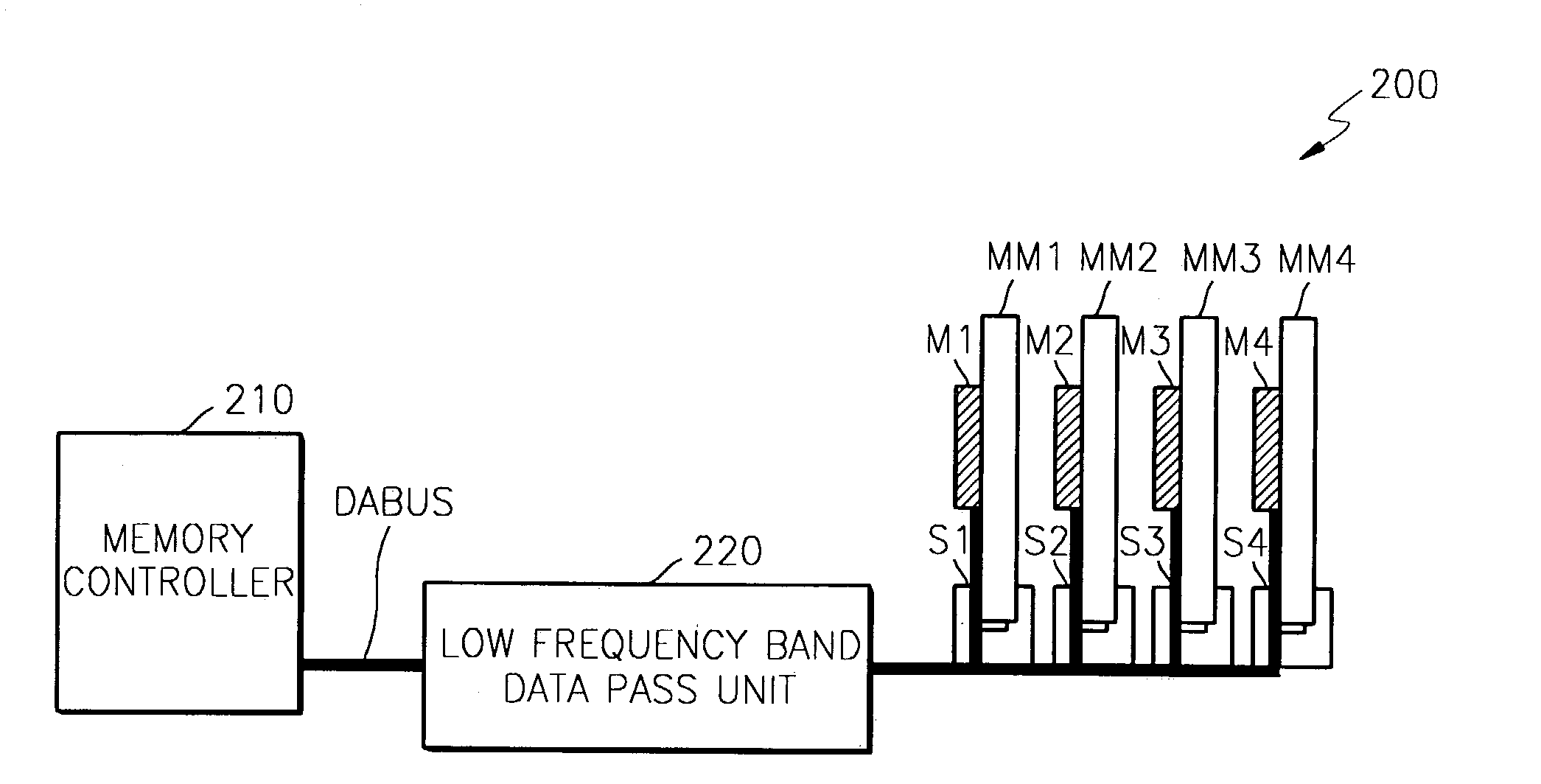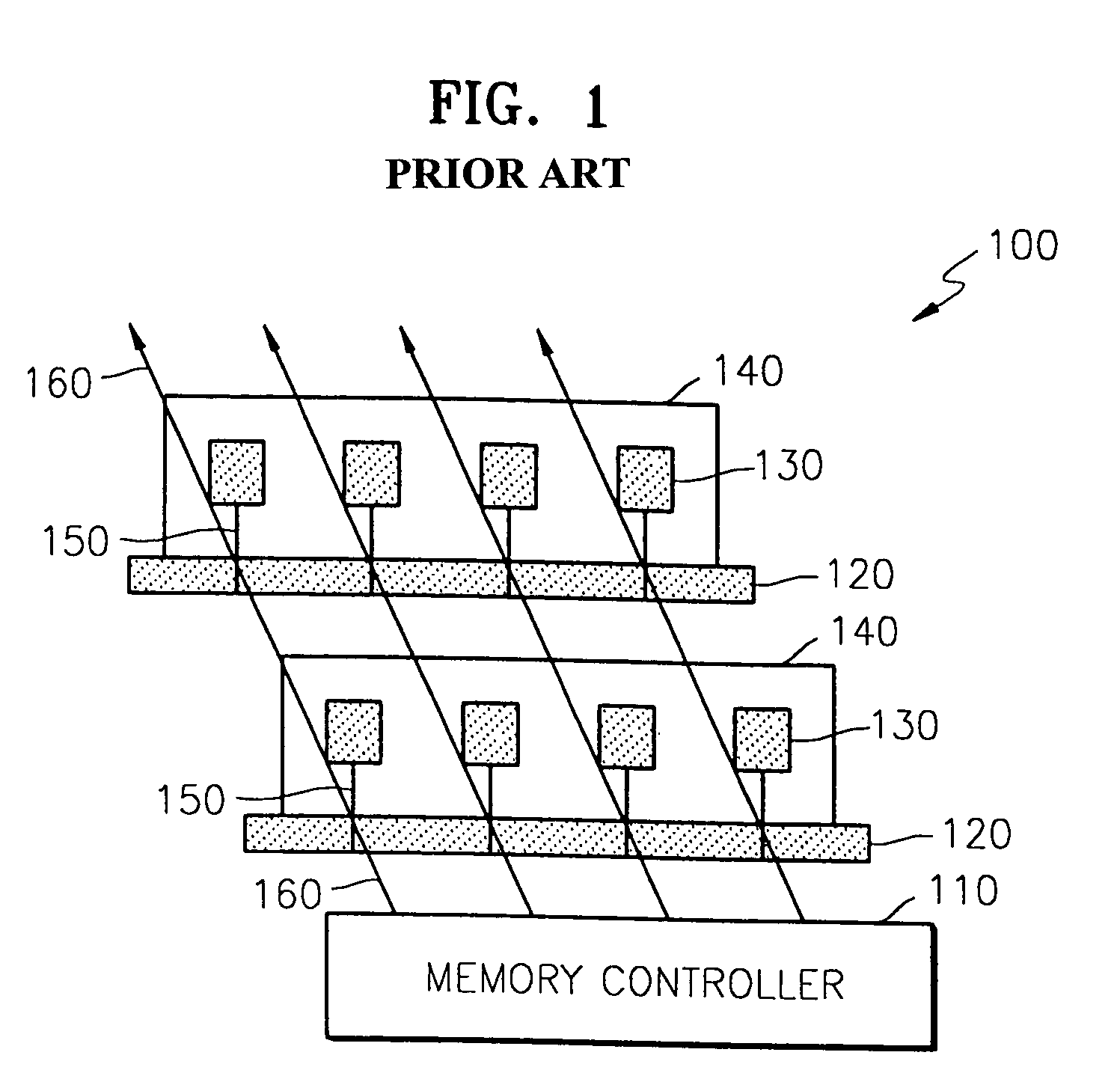Semiconductor memory device with data bus scheme for reducing high frequency noise
- Summary
- Abstract
- Description
- Claims
- Application Information
AI Technical Summary
Benefits of technology
Problems solved by technology
Method used
Image
Examples
Embodiment Construction
[0039]FIG. 2 is a schematic diagram showing a semiconductor memory device according to a first preferred embodiment.
[0040]Referring to FIG. 2, the semiconductor memory device 200 according to the first preferred embodiment comprises a plurality of memory modules MM1 through MM4, having respective memories M1 through M4, and a data bus (DABUS) which transfers data to the memory modules MM1 through MM4. The data bus (DABUS) includes a low frequency band data pass unit 220 which removes the high frequency component of data above a certain “cut-off” frequency, and transfers the filtered data to the memory modules MM1 through MM4.
[0041]The operation of the semiconductor memory device according to the first preferred embodiment will now be explained in detail referring to FIG. 2.
[0042]FIG. 2 shows the memory controller 210 which controls the memories M1 through M4, the memory modules MM1 through MM4, having respective memories M1 through M4, and slots S1 through S4 to which the memory mod...
PUM
 Login to View More
Login to View More Abstract
Description
Claims
Application Information
 Login to View More
Login to View More - R&D
- Intellectual Property
- Life Sciences
- Materials
- Tech Scout
- Unparalleled Data Quality
- Higher Quality Content
- 60% Fewer Hallucinations
Browse by: Latest US Patents, China's latest patents, Technical Efficacy Thesaurus, Application Domain, Technology Topic, Popular Technical Reports.
© 2025 PatSnap. All rights reserved.Legal|Privacy policy|Modern Slavery Act Transparency Statement|Sitemap|About US| Contact US: help@patsnap.com



